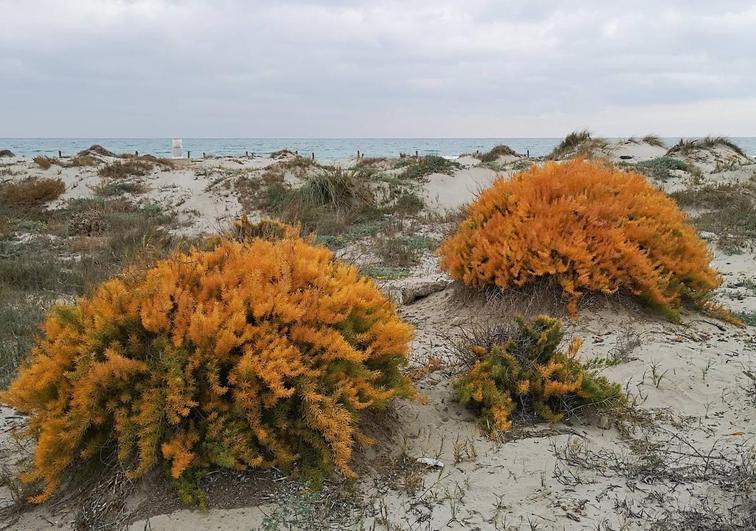As published in the Official State Gazette (BOE) by the Ministry for Ecological Transition and Demographic Challenge (Miteco), the Mar Menor asparagus plant, esparraguera del Mar Menor (‘Asparagus macrorrhizus’), has been officially declared an endangered species.
This plant, scientifically described in 2013, is an endemic shrub to the north of the lagoon and its population has suffered a sharp decline over the last decade.
It is not found anywhere else on the planet and its survival depends on the conservation measures that are put in place by the different administrations. Its entire population is located in the short coastal stretch north of La Manga where the construction of more than 500 homes is currently planned. Many of the plants grow on urban lots.
The inclusion of the Mar Menor asparagus in the Spanish Catalogue of Threatened Species culminates a six-year process initiated by the Association for the Recovery of the Autochthonous Forest of Cartagena (ARBA), which in 2016 presented allegations to the Management Plan for Protected Areas del Mar Menor to establish measures to guarantee the conservation of this scarce shrub.
The General Directorate of the Natural Environment, recalls ARBA, dismissed this proposal and referred the conservation association to the general urban plans of San Javier and Cartagena. ARBA had conducted a census of the Mar Menor asparagus population in 2015, just two years after it was identified as a new species by CSIC scientist Carlos López Encina, and detected some 800 specimens, all geolocated between the Estacio bridge and Veneziola and 90% of them in urban plots.
The Association for the Recovery of the Native Forest turned to Miteco in 2019, which four years later has granted maximum protection to a bush that has lost most of its population “due to the construction and cleaning of beaches”, laments ARBA in reference to actions in sandy areas with heavy machinery in which all the vegetation is razed indiscriminately.
To prevent the asparagus from disappearing, ARBA proposes to the Ministry of the Environment, Mar Menor, Universities and Research and to the municipalities of San Javier and Cartagena a stoppage of construction projects on urban plots located in its area of distribution.
The Ministry for the Ecological Transition and the Demographic Challenge has also declared another species of flora, the La Rioja androsela, in danger of extinction.
The list of flora and fauna in danger of extinction has also added three species of birds: the Pyrenean population of capercaillie (the Cantabrian population was already catalogued), the little bustard and the ricotí or Dupont lark. The last two have a presence in the Region of Murcia and have been in the news recently. The lark, because its few specimens are already reduced to a limited space in the Sierra del Picarcho (Cieza), and the little bustard because its presence was about to make the photovoltaic macro plant of the X-Elio company in Zarcilla de Ramos (Lorca) unfeasible. The project finally went ahead, with the approval of Miteco, after a reduction in the size of the facility and the corrective measures proposed by the promoter.





